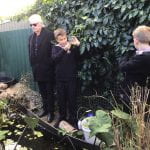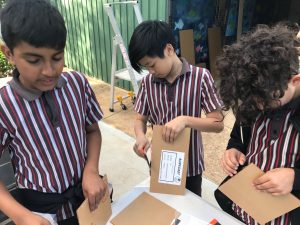Recently Mr McCarthy prepared the Gudgeon aquarium for the birth of the new Gudgeons. The other fish were moved out of the tank. We noticed the male fanning the eggs to help protect them. Later that week, the male fish was removed to prevent the male from eating the eggs.
They Hatched Last Wednesday
We were very excited when we found out that the gudgeons had hatched. The baby gudgeons are very small and you can’t see them that well. Their diet is also very small. They eat crushed brine shrimp and micro worms. We crush it up so that they can eat it. The micro worms are also very small. They actually look like liquid when they all clump up in the container but you can see them when separated. Later we will have to get more tanks for the gudgeons when they grow up otherwise there won’t be enough space. By using a heater the gudgeons laid their eggs earlier than they would otherwise. They normally only lay eggs in summer so by making it warm, they think it’s already summer.
Video 1: The male is fanning the eggs to keep them cool.
Video 2: Two day old baby Gudgeons
-

-
Micro Worms
-

-
Gudgeons
-

-
Where the eggs were laid
-

-
Adult Gudgeon
Facts About Purple Spotted Gudgeons
Purple spotted Gudgeons can grow up to 6 -12 cm long.
Their scientific name is Mogurnda Adspersa.
They lay their eggs on solid surfaces.
They normally don’t continuously swim.
Males will clean the spawning site.
Articles written by Thien- An, Sama Lingampally, Christina Sirisay, Kiara Earl


















































